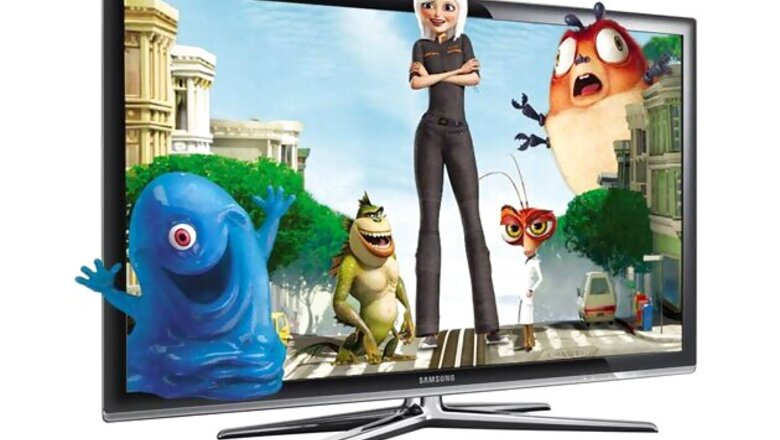
views
New York: ESPN's decision to shut down its 3D channel by the end of the year is the latest sign the format won't revolutionise entertainment as the industry once hoped.
Troubling signs for 3D have been on the horizon for a last year or so. ESPN 3D's audience ratings were below The Nielsen Co.'s measurable threshold, and in March, the Motion Picture Association said box office revenue for 3D showings in the US and Canada was flat in 2012 from a year earlier at $1.8 billion. The number of 3D films released in the period dropped by 20 per cent.
"The ESPN decision is a sign that the 3D ecosystem is not healthy," said Laura Martin, an analyst with investment banking firm Needham & Co. "It must be there's not enough demand for 3D TV."
The sports network said Wednesday that there weren't enough viewers to make 3D broadcasts worth it. It didn't say exactly how many viewers it had, but the number was "extremely limited and not growing," the network said.
Last year, an estimated 6 percent of TVs in the US were able to show 3D programming, according to the most recent data from research firm IHS Screen Digest. Even homes that have 3D TVs don't appear to be using them very much, said IHS analyst Sweta Dash.
The lack of programming and the discomfort of having to wear special glasses could be contributing to the problem, she said.
"It's not convenient for people to watch for hours and hours with glasses," Dash said. "They get tired."
ESPN 3D launched in 2010 as one of nine 3D channels that followed the release of James Cameron's blockbuster film, "Avatar." TV makers rushed to introduce 3D sets as well. ESPN said at the time that it expected a "3D tsunami" in the industry.
3net, a 24-hour-a-day 3D channel that launched in February 2011 under the ownership of Sony Corp., Discovery Communications Inc. and Imax Corp., appeared to be unfazed by ESPN's announcement.
"Although we don't comment on the activities of other companies, their decision has no impact on our business," the venture said in a statement.
IHS's analyst Dash said there appears to be a bigger appetite for 3D TVs overseas in markets such as China.
TV manufacturers have recently switched their focus from 3D to "ultrahigh definition," a format that increases the pixel count of high-definition TVs by four times.
At the International Consumer Electronics Show in January, companies like Sony, LG Electronics Inc., Sharp Corp., and Samsung Electronics Co. all showed off so-called "ultra HD" sets that were meant to be within the price range of middle income early adopters. Sony's 55-inch model sells for $5,000.
One benefit of the ultra HD format is that viewing doesn't require special glasses, and because people can sit closer to the screen without a loss in quality, bigger screens can replicate the immersion of 3D video.
Ultra HD is also easier to handle on the production end.
With 3D TV, two cameras have to be rigged together on a special mount to create the 3D effect. And because viewers can get dizzy with quick cuts, camera operators specialized in 3D stay focused on single shots for longer. That makes it hard for producers to simply use "one eye" of a 3D camera for 2-D broadcasts. Instead, camera positions and personnel costs were just multiplied for events shot in both formats.
Along with higher costs, any viewing on 3D platforms draw viewers away from the standard broadcast, said Rob Willox, director of large sensor technology for Sony Electronics, in an interview last month about the differences between the two formats.
"There are a lot more costs, and you're not increasing audience share, you're dividing it," he said.
In contrast, ultra HD video is more easily scaled down to regular HD, meaning that high-end cameras can be used for viewers watching on TVs of either standard.
Even as it made plans to close down its 3D channel, ESPN said it was a leader in 3D productions, having produced 380 events in 3D over the last 3 years.
"Nobody knows more about sports in 3D than ESPN, and we will be ready to provide the service to fans if or when 3D does take off," it said in a statement. "We continue to experiment with things like ultrahigh definition."



















Comments
0 comment